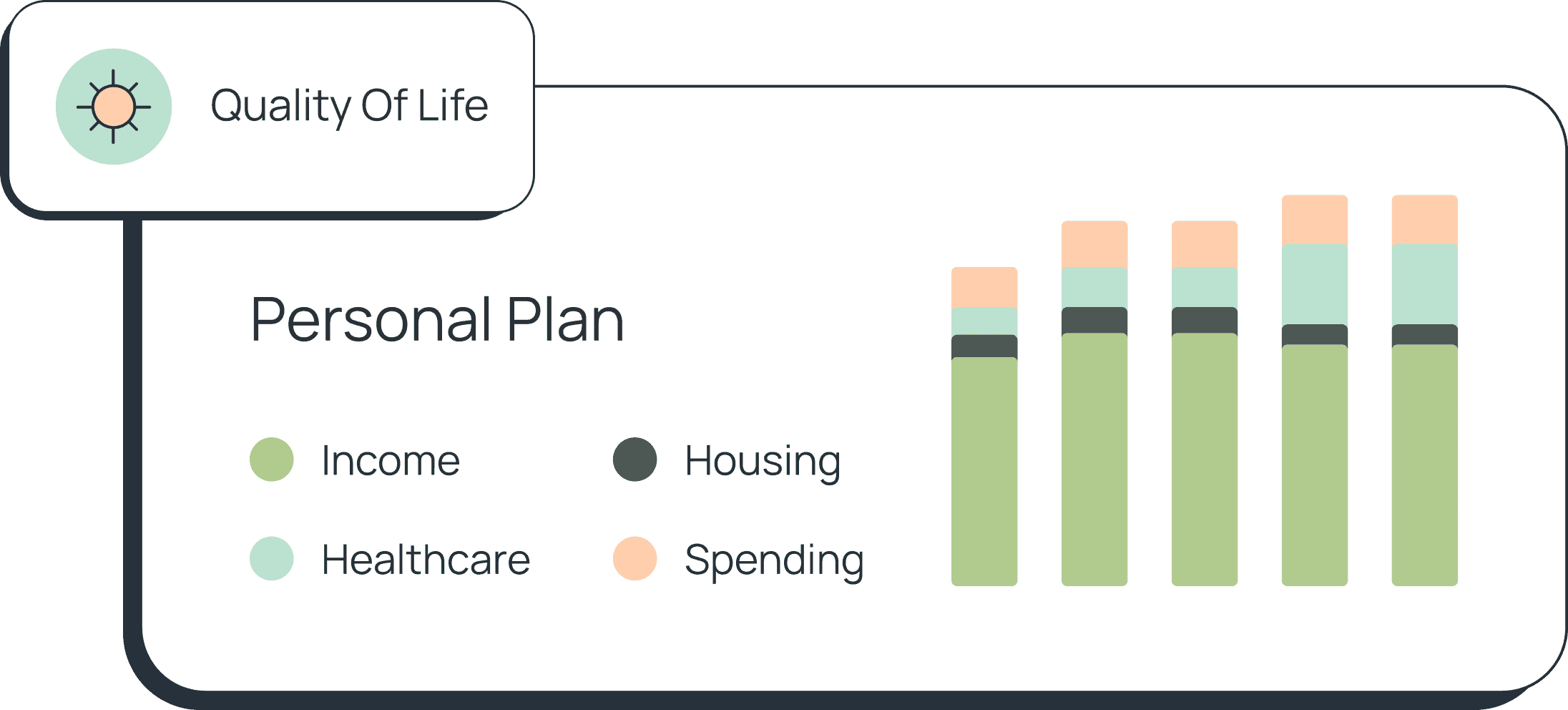Healthcare
With the rate of inflation steadily climbing, the IRS has just announced that the contribution limits for HSAs and HDHPs will jump significantly, nearly 5% from 2022. Learn the new contribution limits and how to decide if it’s time to put some of your pre-tax salary into a health savings account.

C.E Larusso
•
Published November 29th, 2022
Table of Contents
Key Takeaways
Contribution limits between 2021 and 2022 jumped less than 1.5%, while this year's increase is closer to 5%—a big difference.
The contribution limits are adjusted for inflation each year, depending on the Consumer Price Index.
The changes will take effect on January 1, 2023, and will affect plans that begin on or after that date.
With the rate of inflation steadily climbing, the IRS has just announced that the contribution limits for HSAs and HDHPs will jump significantly, nearly 5% from 2022. Learn the new contribution limits and how to decide if it’s time to put some of your pre-tax salary into a health savings account.
IRS Announces Spike in 2023 Contribution Limits for HSAs and Health Plans
The IRS has announced that they will raise the contribution limits for health savings accounts (HSAs) and high-deductible health plans (HDHPs) in 2023, to compensate for inflation.
The changes will take effect on January 1, 2023, and will affect plans that begin on or after that date. Limits between 2021 and 2022 jumped less than 1.5%, while this increase is closer to 5%—a big difference.
In case you aren’t aware, an HSA is a bank account where you can deposit pre-tax dollars to be used for medical expenses, such as deductibles, co-payments, and more. HSA funds cannot be used to pay premiums. You can only use HSA funds if you have an HDHP; make sure to check that your plan is HSA-eligible in order to use these funds. Unlike flexible savings accounts (FSAs), there are no “use it or lose it” rules with HSAs, so your balance can continue to grow year after year. The account also stays with you if you change jobs.
Questions about health and wealth in retirement? We're here to help.
Schedule your FREE Retirable consultation today.Contribution and Out-of-Pocket Limits for Health Savings Accounts and High-Deductible Health Plans
Here’s a detailed look at just how much the limits on HSAs and HDHPs are going to increase.
| 2023 | 2022 | Change Year-over-Year | |
|---|---|---|---|
| HSA Maximum Contributions (self and employer) | Self: $3,850 Family: $7,750 | Self: $3,650 Family: $7,300 | Self: +$200 Family: +$450 |
| HSA Max. Catch-Up Contributions (Age 55+ Only) | $1,000 | $1,000 | No Change |
| HDHP Minimum Deductibles | Self: $1,500 Family $3,000 | Self: $1,400 Family $2,800 | Self: +$100 Family: +$200 |
| HDHP Max. Out-of-Pocket Amounts | Self: $7,500 Family $15,000 | Self: $7,050 Family $14,100 | Self: +$450 Family: +$900 |
In addition the IRS has stated that the maximum available amount for an Excepted Benefit HRA (EBHRA) in 2023 is $1,950—this is a jump of $150 from 2022 limits.
If you exceed the contribution limit for your HSA, you will be subject to an annual 6% excise penalty tax on the excess amount.
Why HSA & Health Plan Limits Are Increasing
The contribution limits are adjusted for inflation each year, depending on the Consumer Price Index. Inflation for 2022 is currently hovering between 8.3 and 8.6%, representing a marked jump from previous years; the HSA and health plan limit jump is to keep pace with inflation.
How to Plan for These Changes
The announcement of the HSA limits usually coincides with the open enrollment period for employer-sponsored health care, right at the tailend of summer. If you’re starting a new job or an employee who can select their health insurance from the marketplace, it’s time to consider whether an HDHP is a good choice for you.
Typically, an HDHP is a better choice if you’re younger and don’t have many medical expenses, as you’ll only be paying for the premiums with post-tax dollars; other fees are often covered by your HSA. If you start with an HSA at a young age and roll over the contributions year after year, with investments you could build a significant little nest egg for your golden years.
Here are some additional advantages to an HSA to be aware of:
- Some HSAs let you invest your money, similar to a retirement plan, letting you select from stocks, bonds, mutual funds, and EFTs
- Contributions to your HSA are tax-free, growth is tax-free, and distributions are tax-free, so long as they are used for qualified medical expenses
- You can make non-medical withdrawals on your HSA after you turn 65, though you will pay taxes on those withdrawals
HSA & ACA 2022 vs 2023 Comparison
Through the Affordable Care Act (ACA) healthcare marketplace, you can select an HDHP with which to use your HSA funds. That said, it’s important to note that ACA prices are increasing in 2023, with the average premium jumping about 10% (the actual numbers differ from state-to-state and plan-to-plan). If you are enrolled or about to enroll in an ACA health care plan, it’s important to weigh the cost of the premium (which HSAs do not cover) with the expected cost of healthcare in a high deductible plan and make sure you’re making the best financial choice for you and your family.
Share this advice

A professional content writer, C.E. Larusso has written about all things home, finance, family, and wellness for a variety of publications, including Angi, HomeLight, Noodle, and Mimi. She is based in Los Angeles.
Share this advice

A professional content writer, C.E. Larusso has written about all things home, finance, family, and wellness for a variety of publications, including Angi, HomeLight, Noodle, and Mimi. She is based in Los Angeles.
Retiring In The Next 3 Years?
Increase your monthly retirement income for simplicity, security, and peace of mind.




